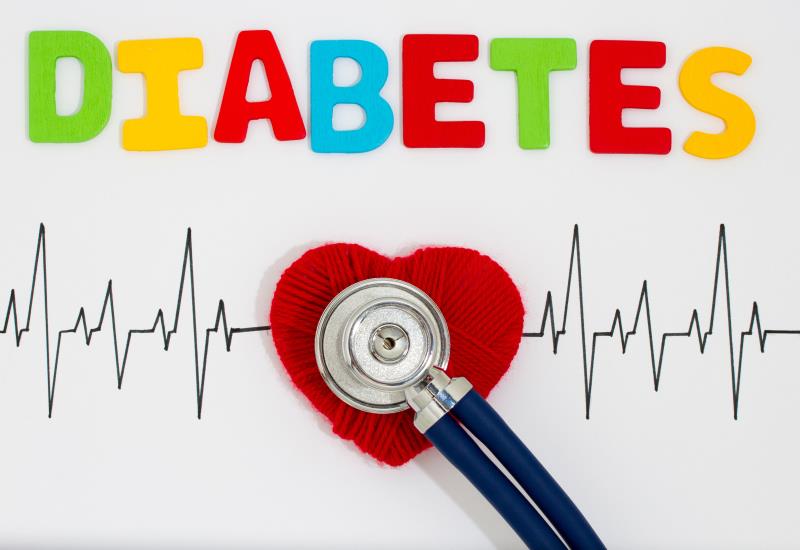
Recently published cardiovascular outcome trials (CVOTs) in patients with diabetes (DM) have led to updates in the management of cardiovascular disease (CVD) in DM patients. These updates were reflected in the 2019 ESC guidelines on diabetes, prediabetes, and CVD, a collaboration between ESC and EASD*.
“We are living in a very exciting time in diabetes research because ... several CVOTs with newer glucose-lowering agents have shown very positive results in terms of reduction of CV events such as non-fatal [myocardial infarction], non-fatal stroke, and CV death. These results have really changed the paradigm on how cardiologists have to approach patients with diabetes,” said Professor Francesco Cosentino, ESC chairperson of the guidelines task force from the Karolinska Institute and Karolinska University Hospital in Stockholm, Sweden.
First-line treatment algorithm modification
One major change pertains to first-line treatment of diabetes, with metformin previously being the sole first-line treatment. “The new guidelines have delineated numerous recommendations indicating that newer glucose-lowering agents such as SGLT-2** inhibitors and GLP-1*** receptor agonists can be considered first-line drugs for the treatment of patients with established CVD and high or very high CV risk,” said Cosentino.
As such, empagliflozin, canagliflozin, dapagliflozin, liraglutide, semaglutide, or dulaglutide are recommended in treatment-naïve patients with T2D and established CVD or with high or very high CV risk, while metformin can be considered in T2D patients who are overweight without established CVD and with moderate CV risk. Patients already on metformin who develop CVD should have an SGLT-2 inhibitor or GLP-1 receptor agonist added to their treatment.
“After many years of dominance, metformin has been slightly pushed out of the limelight to patients who don’t have CVD and who are drug-naïve,” said Professor Peter J. Grant, EASD chairperson of the guidelines task force from the University of Leeds, UK.
Reclassification of CV risk and subsequent guideline changes
Another major change pertains to CV risk classification. “The duration of diabetes together with the presence of comorbidities and other risk factors is driving the type of CV risk of our patients,” said Cosentino.
“We’ve reclassified CV risk so that we no longer talk about primary and secondary prevention but really talk about degrees of risk [ie, moderate-, high-, and very high-risk],” added Grant.
Patients with moderate risk are young with <10 years duration of diabetes, those with high risk have had diabetes for ≥10 years plus have ≥1 additional risk factor but no target organ damage, and those with very high risk have diabetes and established CVD or target organ damage/≥3 risk factors/>20 years duration of diabetes.
“This type of classification is impacting all of our new recommendations and it is anticipated that it may provide proper diagnostic and therapeutic approaches to patient care,” Cosentino added.
For example, the management of dyslipidaemia – LDL-C targets and recommended reductions – in diabetes patients is built around these new classifications, said Grant. While statins remain the first-choice lipid-lowering agent, a PCSK9 inhibitor is now recommended in patients with very high CV risk with persistent high LDL-C despite maximum statin plus ezetimibe or those with statin intolerance.
With regard to antiplatelet therapy, aspirin is not recommended as primary prevention in patients with moderate CV risk. However, aspirin at a dose of 75–100 mg/day for primary prevention can be considered for diabetes patients with high or very high CV risk who do not have contraindications.
Lifestyle is key
The new guidelines also factor in changes in lifestyle recommendations. These include encouraging lifestyle interventions to delay or prevent the progression from prediabetes to diabetes and no longer promoting moderate alcohol intake for CV protection.
“There has been a long-standing view that moderate alcohol intake has beneficial effects on the prevalence of CVD,” said Grant. “Two high-profile analyses have reported this is not the case and that alcohol consumption does not appear to be beneficial. On the basis of these new findings we changed our recommendations,” he added.
Managing hypertension and kidney disease
Lifestyle changes are also recommended to manage hypertension in patients with diabetes or prediabetes. In terms of medical management, RAAS blockers are preferred over beta-blockers or diuretics in patients with prediabetes. Recommended initial treatment is a RAAS blocker combined with a calcium channel blocker or thiazide/thiazide-like diuretic. Blood pressure (BP) targets should be individualized, with different targets in older patients and those with high cerebrovascular risk or diabetic kidney disease.
For DM management in patients with kidney disease (eGFR 30 to <90 mL/min/1.73m2), SGLT-2 inhibitors are preferred, as well as the GLP-1 receptor agonists liraglutide and semaglutide, said Grant.
Conclusion
“The emphasis of these guidelines is to provide state of the art information on how to prevent and manage the effects of diabetes on the heart and vasculature, with a focus on new data that has emerged since the 2013 document,” said Cosentino.
Other recommendations include self-monitoring of blood glucose and BP levels, medical management of peripheral vascular disease, arrhythmias, and heart failure, and coronary revascularization, all of which can be viewed at https://academic.oup.com/eurheartj/advance-article/doi/10.1093/eurheartj/ehz486/5556890.